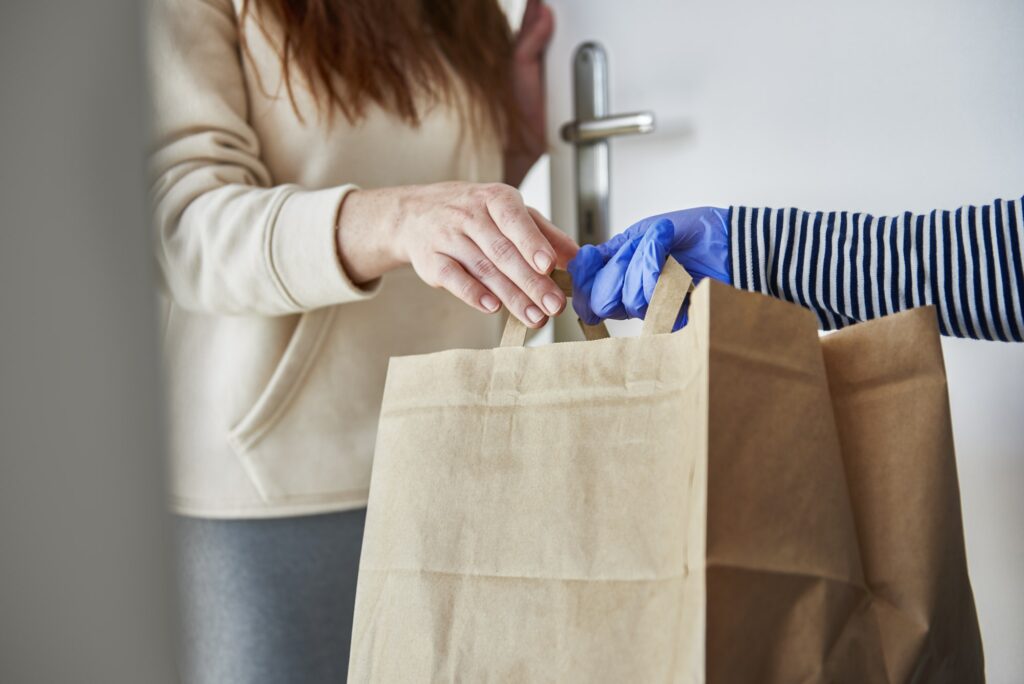
“The food delivery industry has experienced a renaissance during the pandemic, and it appears certain that we’ll be dealing with a new landscape after the pandemic ends. Safe, touchless, mobile-ordering technology (think apps and ordering websites) will be the gold standard that restaurants will need to adjust to.”
But what other trends can restaurants and the delivery industry expect? From a shift to prioritizing off-premises strategies to curated at-home dining experiences and new health-based branding opportunities, we take a look at some of the remarkable trends that are already developing in food delivery and forecast what’s going to stick around.
Family meals and healthy alternatives
One side-effect of frequent ordering-in is that people will eventually start to focus on their health, especially as exercise and other outdoor activities have become more difficult during the pandemic. Not only will healthy alternatives to traditional delivery come to the forefront after the pandemic, but you can also expect companies to capitalize on the related rise of health-based branding opportunities.
On a similar note, curated experiential boxes, including family-size meals, have become increasingly popular as the pandemic has gone on. Because we can expect that renewed emphasis on family mealtime to continue after the pandemic, delivery will likely have to adjust to this more creative and collaborative approach to ordering in.
Grocery delivery
Over the course of the pandemic, we’ve seen more and more businesses — from large grocery chains and local convenience stores to fancy bakeries and butchers and beyond — incorporate delivery into their business models. Because the boost in convenience for consumers has been dramatic, this is a major trend we’d expect to see stick around and even expand after the pandemic. How exactly this trend might affect restaurant delivery — whether that means an emphasis on selling surplus inventory straight to consumers or offering expansive meal kits — will be something to keep an eye on.
Ghost kitchens
Expect to see a shift to prioritizing off-premises strategies, spearheaded by ghost kitchens. Think of them as restaurants without a front-end or dining room — just industrial kitchens that focus on producing food for delivery. As delivery continues to grow, ghost kitchens offer a number of important benefits, including lower operational costs, high scalability, and centralization. Ghost kitchens also make it easier to serve multiple brands with one location and to experiment with new food services and audiences, which will be helpful as the delivery industry adapts to a post-COVID environment.
Independent businesses and local support
Finally, we can expect community spirit to have a significant impact on delivery prospects after the pandemic. In the past few months, as the pandemic has dragged on, we’ve seen a renewed attention paid to supporting local and independent businesses. Consumers have developed a stronger sense of community with their local small businesses, and we shouldn’t expect to see this disappear once the pandemic is over. Delivery policies that benefit local businesses and emphasize users’ individual neighborhoods and experiences will go a long way towards making the delivery experience more unique and palatable for customers.
About Brizo Data, Inc.: Brizo Data helps the foodservice industry by providing the strategic data you need to win in your market. We empower restaurant vendors and restauranteurs with better data for Business Intelligence, Market Research, and Competitive Analysis. Brizo monitors the online footprint of every food serving establishment in the US and Canada – from social media presence, online reviews, menu items, market composition, and even technological choices.